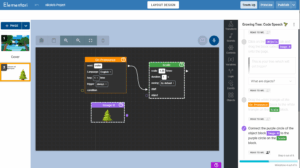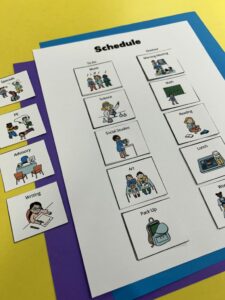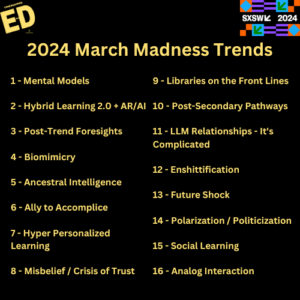
Rethinking Onboarding: From Orientation To Enablement
In today’s fast-paced digital economy, every new hire represents both an opportunity and a ticking clock. The faster they become productive, the quicker the organization sees returns on its investment in talent. But traditional onboarding processes often fall short—delivering checklists instead of context, policies instead of purpose, and surface-level guidance instead of deep capability-building. That’s where Learning and Development (L&D) steps in—not as an afterthought, but as a strategic core of onboarding.
Integrating L&D into onboarding isn’t just about speeding things up. It’s about setting up new hires for long-term success, boosting engagement, reducing attrition, and aligning talent with business goals from day one. Let’s explore how you can weave L&D into your onboarding process to supercharge ramp-up time and performance.
Why Ramp-Up Time Matters More Than Ever
Ramp-up time—the period it takes for a new hire to reach full productivity—can make or break the ROI of hiring. According to industry benchmarks, the average ramp-up period ranges from three to eight months depending on the role. For sales reps or developers, this can stretch even further. Slow ramp-up results in:
- Delayed project delivery.
- Increased team workload.
- Higher turnover risk.
- Lower engagement and morale.
Yet, most onboarding programs focus on administrative setup rather than skill development or contextual learning. When you infuse L&D into onboarding, you accelerate not just knowledge transfer but behavioral readiness—enabling employees to add value quickly and confidently.
Rethinking Onboarding: From Orientation To Enablement
Traditional onboarding often covers:
- Company policies.
- Organizational charts.
- Tools and system walkthroughs.
- Basic compliance training.
While these are necessary, they don’t equip new hires to succeed in their roles. What’s missing is role-based learning, performance support, and continuous feedback—hallmarks of a robust L&D strategy. A modern onboarding experience should be:
- Structured but personalized.
- Tech-enabled and interactive.
- Designed to build both competence and culture.
- Integrated with long-term development pathways.
By embedding L&D into onboarding, you shift the focus from merely integrating people into the organization to enabling them to perform, grow, and innovate.
Key L&D Elements To Integrate Into Onboarding
Here are the critical components of an effective L&D-driven onboarding program:
1. Role-Specific Learning Journeys
Design onboarding tracks based on job roles, with curated learning paths that include:
- Soft skills and hard skills training.
- Tool and system simulations.
- Product or domain-specific content.
- Case studies and real-world scenarios.
Personalizing learning this way accelerates relevance and retention.
2. Just-in-Time Microlearning
Break down information into bite-sized, contextual learning nuggets. Microlearning can be embedded into day-to-day workflows via:
- Interactive videos.
- Quizzes.
- Checklists.
- Short tutorials.
These resources reduce cognitive overload and support retention during the critical early days.
3. Mentorship And Peer Learning
Pair new hires with experienced mentors or onboarding buddies who can:
- Provide practical knowledge.
- Share organizational norms and expectations.
- Offer emotional and social support.
Supplement this with peer learning forums or Slack channels for quick collaboration.
4. Performance Support Tools
Equip new hires with tools that help them learn on the job, such as:
- Interactive process guides.
- On-demand FAQ.
- Role-based knowledge bases.
- AI chatbots for real-time help.
The goal is to reduce dependence on others and boost self-sufficiency.
5. Cultural Immersion Modules
Help new hires align with the company’s vision, values, and behavioral expectations through:
- Gamified cultural training.
- Real employee stories.
- Scenario-based role-play.
- Live Q&A with leadership.
Cultural fit is often the biggest predictor of long-term success and retention.
The Role Of Technology In L&D-Driven Onboarding
Technology is a key enabler in streamlining and scaling learning-infused onboarding. Here’s how:
a. Learning Management Systems (LMSs)
Use an LMS to automate content delivery, track learning progress, assess outcomes, and trigger reminders for incomplete tasks.
b. No-Code/Low-Code Onboarding Apps
Build personalized onboarding workflows without heavy IT involvement. These platforms allow you to automate processes, integrate learning modules, and customize role-based experiences.
c. AI-Powered Learning Assistants
AI can recommend personalized learning based on role, behavior, or performance. It also helps in identifying skills gaps and suggesting targeted resources during onboarding.
d. Mobile Learning Platforms
Onboarding doesn’t need to be desk-bound. Let new hires access content on the go with responsive, mobile-first learning experiences.
Measuring Success: L&D Metrics For Faster Ramp-Up
To ensure that integrating L&D into onboarding drives tangible value, track the right metrics:
- Time to productivity
How soon does the new hire reach expected performance levels? - Learning completion rates
Are new hires engaging with and completing onboarding content? - Skill assessment scores
Are they mastering critical knowledge and skills? - Employee satisfaction (eNPS)
How do new hires rate their onboarding experience? - Retention in first 6–12 months
Is better onboarding reducing early attrition? - Manager feedback
Are supervisors seeing performance readiness?
Use these insights to continuously improve onboarding programs and make them more responsive to real business needs.
Real-World Examples: L&D-Driven Onboarding In Action
A Tech Start-Up’s Sales Team
A fast-growing SaaS start-up redesigned its onboarding with L&D-led learning paths for its sales team. Each path included:
- Interactive product demos.
- Objection-handling workshops.
- Weekly check-ins with mentors.
Result? Ramp-up time dropped from 100 days to 45 days, with a 30% higher quota attainment in the first quarter.
A Global Consulting Firm
A consulting firm integrated no-code learning tools into its onboarding portal. New hires completed gamified modules on industry knowledge, client case studies, and internal tools. Onboarding satisfaction scores jumped 40%, and the first-year retention rate improved by 25%.
Best Practices For L&D-Integrated Onboarding
Here are actionable tips for embedding L&D into your onboarding strategy:
- Start before day one
Send preboarding materials that include welcome videos, tool access, and first-week schedules. - Make it multimodal
Blend eLearning, live sessions, gamification, and mentorship to cater to different learning styles. - Tie learning to real tasks
Design learning that aligns with what the employee will actually do on the job. - Use feedback loops
Continuously collect feedback from new hires and improve the program in real time. - Connect onboarding to career development
Show how onboarding is the start of a larger growth journey. Link it to internal mobility and upskilling paths.
A Final Thought: Build For Belonging, Not Just Productivity
While speed and efficiency are important, onboarding should also spark connection and purpose. When L&D becomes part of onboarding, it helps employees not only perform faster but feel valued, supported, and empowered to grow. A great employee onboarding software can define how an employee views your company for years to come. Make it count.
Conclusion
Integrating L&D into your onboarding process is no longer optional—it’s a strategic imperative for fast-growth organizations and forward-thinking HR leaders. It shrinks ramp-up time, drives early success, and lays the foundation for a high-performing, loyal workforce.
Start small if you need to—pilot role-based learning paths, implement microlearning, or create a mentorship framework. But start now. The faster your new hires learn, the faster your business grows. Ready to build a future-forward onboarding program that actually works? Let learning lead the way.



